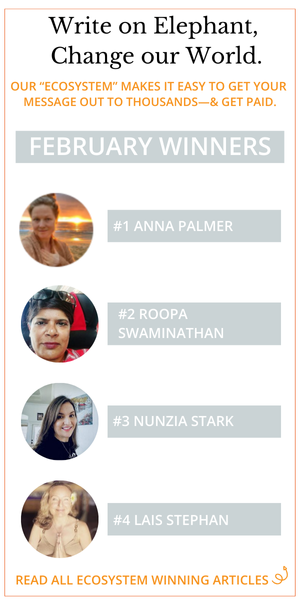Bring to mind a recent situation that was challenging, one where you recall your heartbeat quickening, your breath rate increasing, and perhaps your muscles slightly tensing.
Whether it was an unpleasant moment – such as the heat of an argument – or a relatively pleasant moment – the excitement just prior to public speaking, our bodies have a built-in protection mechanism when faced with perceived threats called the fight, flight, or freeze response. We are physiologically hard-wired to respond to challenging situations, whether life-threatening or not, with this survival instinct.
When adversity arises, our nervous system responds by turning on the fight, flight or freeze cascade regulated by an ancient part of our brains – the amygdala, sometimes referred to as our ‘lizard brain’ as it is basic to our evolution and survival.
We have a lot to be grateful for with regard to this stress control center, as it allowed our ancestors to successfully navigate real threats for eons in a predator-prey world, so that we could be here today!
When in fight, flight, or freeze mode, our body pumps out hormones and neurotransmitters, including cortisol and adrenaline, that direct blood and resources to certain areas such as the heart and muscles that are essential when we need to defend (fight), run away (flight), or – when needed – play dead (freeze). Resources are diverted away from other areas such as the brain and digestion that are secondary in such situations. In a split second, our pupils dilate, our heart beats faster and harder, our muscles tense and even tremble, our breathing quickens, and our blood pressure increases – all in the name of survival.
This response is often referred to in neuroscience as the ‘stress response’. It gives us a needed burst to meet with adversities both large and small, and can offer a helpful boost of energy when, for example, we are performing in a sporting event or making a presentation.
It has been shown via brain imaging studies that when we are in stress response, our amygdala lights up while our prefrontal cortex, the higher reasoning and executive functioning center, and our hippocampus, the memory bank, simultaneously shut down. In effect, we become no longer ‘at choice’. As neuropsychologist Dan Siegel’s brilliant “brain in the hand” model demonstrates, we have ‘flipped our lid’ and cannot access our higher decision-making skills.
Additionally, our hard-wiring generally does not discern between truly life-threatening events – such as being in the path of an oncoming bus – and significant stressors that are non life-threatening – such as arguments, traffic jams, long lines, caregiver fatigue, and difficult relationships.
These situations typically lead to the same physiological stress response, and there is a feedback loop effect – the more we respond to difficult situations with the stress response, the deeper and stronger its neuronal pathway becomes. Since challenging yet non life-threatening situations occur on a near-daily basis for most of us, over time, high cortisol and adrenaline levels take a toll on both our mental and physical health, compromising our cardiovascular, cognitive, and immune health.
So where is the good news? There is a silver lining.
Our brains exhibit, thankfully, neuroplasticity. This means our brains are not static and actually continue to evolve into adulthood. With practice and repetition, we can, in effect, strengthen certain neuronal pathways and weaken others. As the neuroscientific theory Hebb’s Rule states “neurons that fire together, wire together”.
Take the image of water flowing off a mountain. The water will take the path of least resistance. Over time, deep grooves will develop in which future water will flow. This is a rough analogy of Hebb’s Rule. Repeated actions over time create well-worn neuronal pathways that in essence are our habits.
Mindfulness meditation is a skill. As with most any skill, it take practice. When we practice over and over again, we begin to hone the skill of inclining our mind toward a relaxed responsiveness and ease.
This ease facilitates a physiological ‘relaxation response’ which is associated with an increase in certain neurotransmitters such as serotonin, dopamine and GABA, leading to a state where blood pressure, heart rate, digestive functioning, and hormonal levels return to homeostasis and balance.
This relaxation response is in effect an antidote to the stress response and has been shown to be elicited by particular activities such as physical exercise and mindfulness. The fruits of a consistent mindfulness meditation practice include strengthening the ability to ‘put our lid back on’ even when our nervous system is over-stimulated, regain access to our higher reasoning and memory centers of the brain, be ‘our own boss’, and make better choices.
Interestingly, imaging studies have shown that after only eight weeks of mindfulness meditation practice, the size of the prefrontal cortex actually increases and the size of the amygdala decreases.
In addition to the stress response, there is another ancient pathway of our brains, the “negativity bias”, for which mindfulness meditation can help serve as countermeasure. In the name of survival, our brain’s memory stores have a predilection for remembering negative emotions and experiences more than positive ones.
This is why those insults that were thrown at us decades ago can be recalled and felt so vividly. We have inherited over the millennia this hard-wiring to be sensitive to negative stimuli in order to learn to avoid adversity in the future – even when the stimuli aren’t life-threatening.
Research studies have borne out our tendency toward negativity bias. Although this can be very helpful at times, the marked asymmetry that gives too much credo to the negative can be an obstacle to us seeing what we are capable of, that well-being and ease are attainable, and that we are enough.
In mindfulness meditation practice, we purposefully cultivate positive mind states such as generosity, gratitude, and loving-kindness—antidotes to the negativity bias.

 Share on bsky
Share on bsky







Read 0 comments and reply